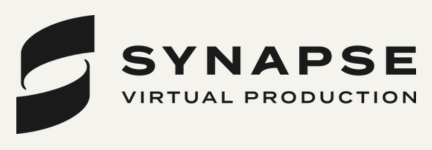
Why Canada Needs to Empower More Creativity

Within the industry, the words ‘creativity’ and ‘innovation’ get tossed around like candy… and for a good reason. If the goal is to find new, original and clever ways to solve marketing problems, sell products and challenge public perceptions, then it makes sense to use these with regard to the practice. After all, creativity, as Ultralight founder and chief creative officer Matt Hassell observes, is “fuel for all innovation”.
That said, often, the way in which these terms get used can be - especially in Canada - a little inaccurate. Creativity, in some ways, has been co-opted, now referring to the process and the people who make the process possible, rather than the exact application of one’s imagination to the task. And to this end, for as much as we like to label our solutions as ‘innovative’, are they really, when we’re not necessarily spreading our creativity to more than just the brief? These are all questions with which Matt wrestles on the daily.
So, to present his thesis that every business needs innovation – which requires true creativity – and that the Canadian ad scene would benefit from its talent applying their creative muscles to other parts of the business, Matt sat down with LBB’s Jordan Won Neufeldt for a chat.
LBB> From the top, let’s talk about your definitions of innovation and creativity. What are the fundamental differences, and how do they link?
Matt> Creativity is fuel for all innovation – you can’t have innovation without it. It’s the stuff that allows for the leap you take to go from the need to the solution. Sure, it’s a little ethereal and not quite easily explicable without metaphor, but that’s what it is.
However, as an industry, we love to label our solutions as ‘innovative’ more than as ‘creative’.
I would also say that creativity seems to have been co-opted as a term. Understandably, agencies need to show a ‘creative process’ – something that is understood and ultimately sellable to clients. Currently, we often sell hours, and this process is the easiest way to prove how those hours are working. Creative seems to describe that process, the outcome of that process, and the people that make that process possible. But for me, these all lack the key part of creativity, and that is the application of your imagination to a task.
LBB> Let’s apply this to the Canadian advertising industry as a whole. Is one of creativity or innovation more prominent than the other? And why?
Matt> I think there is a perception that innovation is more widely required or desired. But you can’t really have true innovation with a creative leap or spark. Innovation is required all over the business world. So, creativity is needed everywhere too. From internal strategic plans to product outputs.
LBB> Building on this, what do you think Canada could be doing better? Are we making too many ads?
Matt> We might be making too many ineffective ads, but, I think whether we need fewer or more is a bit beside the point – we need more creativity in general.
Canada should empower more creativity. We should see ‘best practices’ as a launching point, not an end point. To follow best practices is to do the opposite of innovation, and by extension, the opposite of creativity.
LBB> Instead, how can the industry better impact other parts of businesses and organisations, without sacrificing quality creative in the process? What is the ideal balance, in your opinion?
Matt> I’ve purposefully started to follow a ‘consult and create’ model for businesses I work on. Firstly, we interrogate the issues and then we problem-solve. Sometimes, the output is a creative ad, and sometimes it is more of an organisational change. But, by applying design thinking and creative thinking, we can get to the right outcome.
LBB> Specifically, are there particularly prevalent business or organisational issues that you think creative innovation would be especially effective at addressing?
Matt> Any business that has used the word ‘innovation’ needs creativity. Creativity is necessary for anyone who wants to leapfrog their competition, and anyone who wants to be more meaningful to their audience.
LBB> And how would you personally want to approach these?
Matt> I love to have clients that share their concerns more broadly than through a marketing lens. A customer service brand, for example, might need an ad campaign to sell more products, or they might need a more engaged staff. When both options are on the table, that is where creativity can really make a difference. Here, creating a more meaningful employee brand might be what’s called for, more than a consumer brand.
LBB> Let’s talk about all of this with regard to Ultralight. How has this belief system impacted the way you do business and interact with clients?
Matt> This system developed pretty organically. It was the obvious need for my clients who need help building their audiences and their sales. As a boutique shop that staffs up with great independent talent, it allows us to get the right people on a task, before we know the needed outcome.
LBB> Do you have any practical examples of using creativity to fuel business innovation?
Matt> Many business innovations have a longer gestation period than a creative campaign. So, we’ve created a few plans we are hoping to actualise soon, most of which have been developed in tandem with the clients and some of their other partners. I will keep you posted when they go live!
LBB> With all this in mind, do you expect to see a shift in the way creativity is applied across the coming years, with agencies stepping beyond their traditional roles?
Matt> I certainly hope so. Canada is abundant with creative talent. Our own industry has thousands of independent creatives (freelancers) that I think can be directed to client issues beyond advertising. I’d love to help connect creative thinkers with clients beyond campaigns. Maybe this will never be the role for a traditional agency, but it is certainly a growth opportunity for creative consultancies and independent creatives.
LBB> Finally, for younger creatives entering the industry, is there any advice you’d like to offer on how they can best stretch their creative thinking to adapt to this new demand?
Matt> Sure! Focus in equal measure on your particular craft and on your creative problem solving abilities, pay attention to how you get to a solution, and make it repeatable.
And if you’ll allow, advice for more seasoned creatives would be to go directly to a client with ideas, which can open up a whole new avenue of both revenue and possibility.













